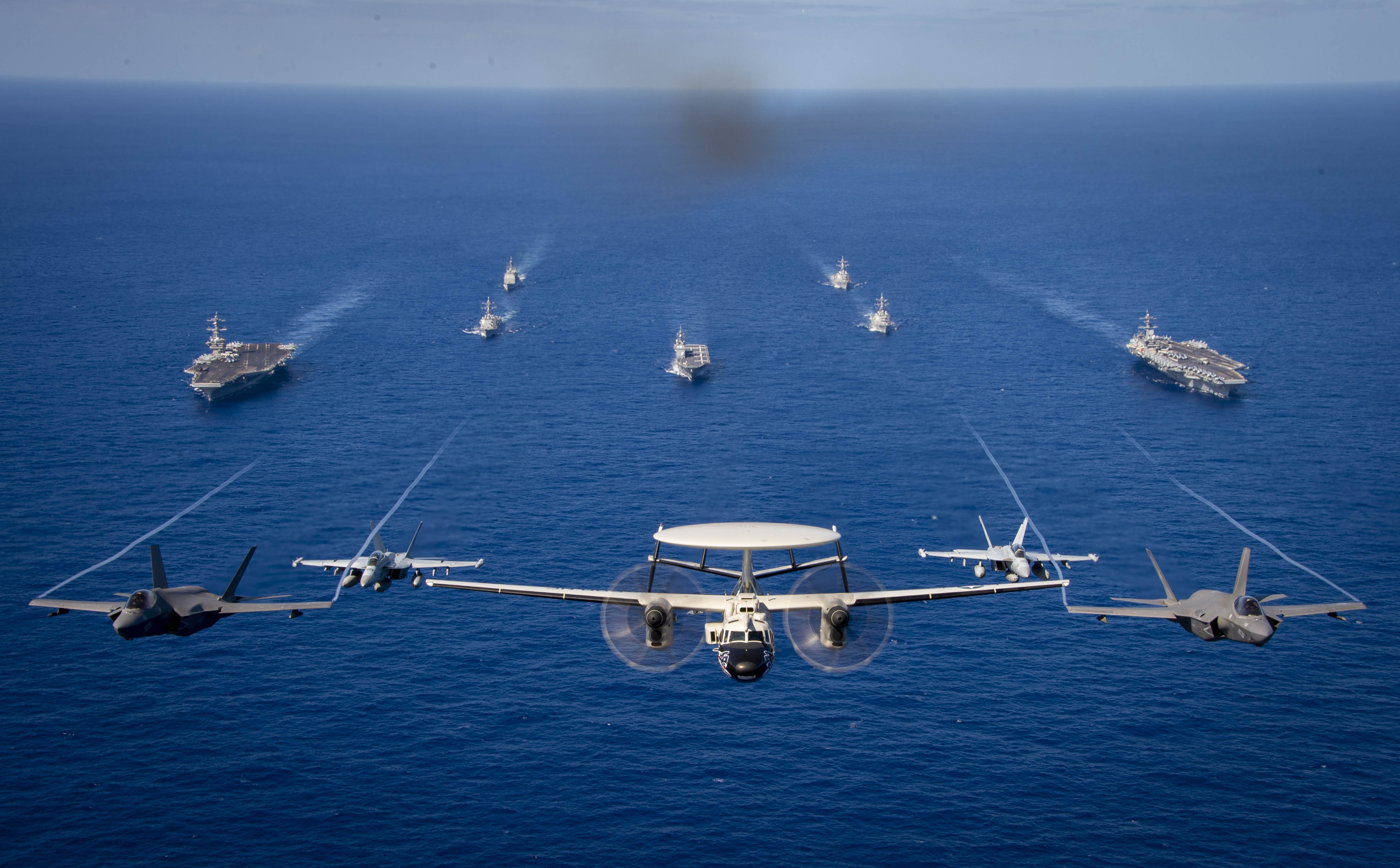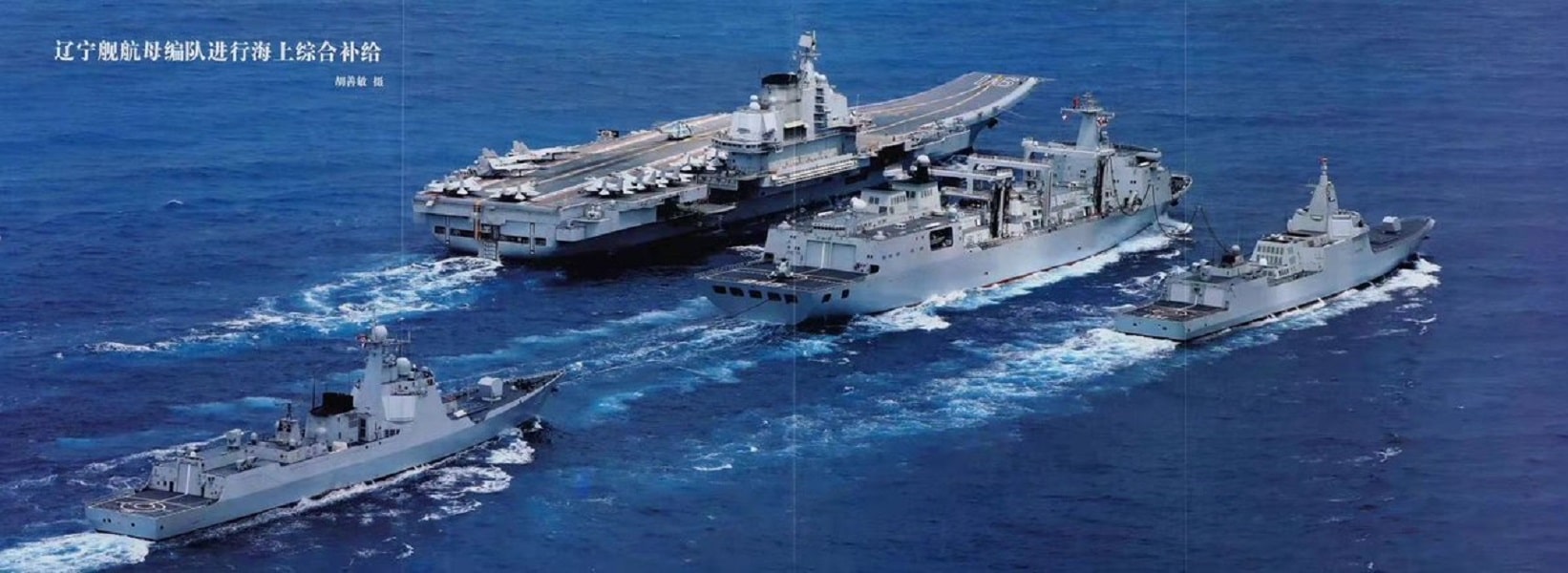Amid rising global tensions, the United States military has taken a decisive step to strengthen its strategic positioning in the western Pacific by deploying three aircraft carriers.
This move, aimed at deterring potential threats from China and North Korea, is unfolding against growing concerns about the specter of broader conflicts in the Middle East.
The USS Carl Vinson is carrying out a training exercise in the Philippine Sea alongside the USS Theodore Roosevelt and the Japanese helicopter destroyer JS Ise.
The Japan Maritime Self-Defense Force confirmed the participation of nine additional vessels in this coordinated display of naval strength. The USS Ronald Reagan, stationed in Yokosuka, Japan, remains at its home port, resulting in three out of the eleven US carriers strategically positioned in the Indo-Pacific.
Previously, in 2020, the US Navy deployed its three aircraft carriers, namely the USS Theodore Roosevelt, USS Nimitz, and USS Ronald Reagan, to the Pacific Ocean, sparking a strong reaction from China’s state-sponsored media, which asserted that Beijing would stand firm in safeguarding its interests in the region.

Furthermore, the state media issued a warning note highlighting China’s possession of anti-ship ballistic missiles, such as the DF-21D and DF-26, designated as potential threats to aircraft carriers.
Nevertheless, the latest presence of three aircraft carriers came when the United States’ treaty ally, the Philippines, became embroiled in territorial disputes with Beijing in the South China Sea.
Rear Adm. Carlos Sardiello, commander of the Carl Vinson strike group, affirmed the readiness of the carrier strike group to execute a comprehensive range of operations. He emphasized the strategic importance of training opportunities in the Philippine Sea, where large, capable, and agile platforms can efficiently aggregate.
During the exercises, a Chinese naval spy ship was reportedly detected 5 to 10 miles away from the Carl Vinson, suspected of collecting intelligence on US and Japanese capabilities and operations.
Despite this, Rear Adm. Christopher Alexander, leading the Theodore Roosevelt strike group, downplayed concerns, saying that the presence of Chinese navy ships in the congested waterways did not pose a threat.
Additionally, the US Air Force B-52H Stratofortress engaged in bilateral training with the Japan Air Self-Defense Force over the Sea of Japan and East China Sea on January 30.
US-China Tensions
The deployment of carriers, reportedly planned months ago, reinforces the US military’s unwavering commitment to the Indo-Pacific region amidst regional tensions.
Increasing apprehensions within the United States and its allies center around the possibility that Chinese President Xi Jinping might instruct his military to seize Taiwan in the coming years.
Taiwan, a democratically governed island, is regarded by China as its territory. Beijing, asserting its commitment to unify with the self-governed island, has not ruled out the potential use of force.
Lai Ching-te, a member of Taiwan’s ruling Democratic Progressive Party and known for his skepticism toward China, emerged victorious in the presidential election held in mid-January. His election has prompted Beijing to categorize him as a perceived threat to regional peace.
US officials say President Xi has mandated that his military be prepared to take Taiwan by 2027. However, analysts widely perceive this directive as an effort to motivate the Chinese army rather than an actual timeline for invasion.

In addition to the Taiwan situation, the United States is grappling with concerns related to North Korea, which continues missile launches and deepens defense ties with Russia. Consequently, the US military is conducting a comprehensive assessment of its readiness.
Furthermore, joint efforts with allied countries have been underway to enhance the logistics network through various military drills.
As reported by Reuters, US war games have revealed a strategic concern that China could target jet fuel supplies or refueling ships to incapacitate US air and sea power, bypassing confrontations with heavily armed fighter jets or the sinking of the American fleet of surface warships.
To counter this, the United States aims to diversify its regional military logistics hubs, including establishing warehouses in Australia.
The Pentagon has asserted that the Department of Defense, in collaboration with allies, is actively working to enhance the mobility and distribution of US forces.
Experts, however, contend that the current concentration of Washington’s network is inadequate and highlighted a lack of sufficient financial investment and urgency in this critical endeavor.
- Contact the author at ashishmichel(at)gmail.com
- Follow EurAsian Times on Google News




